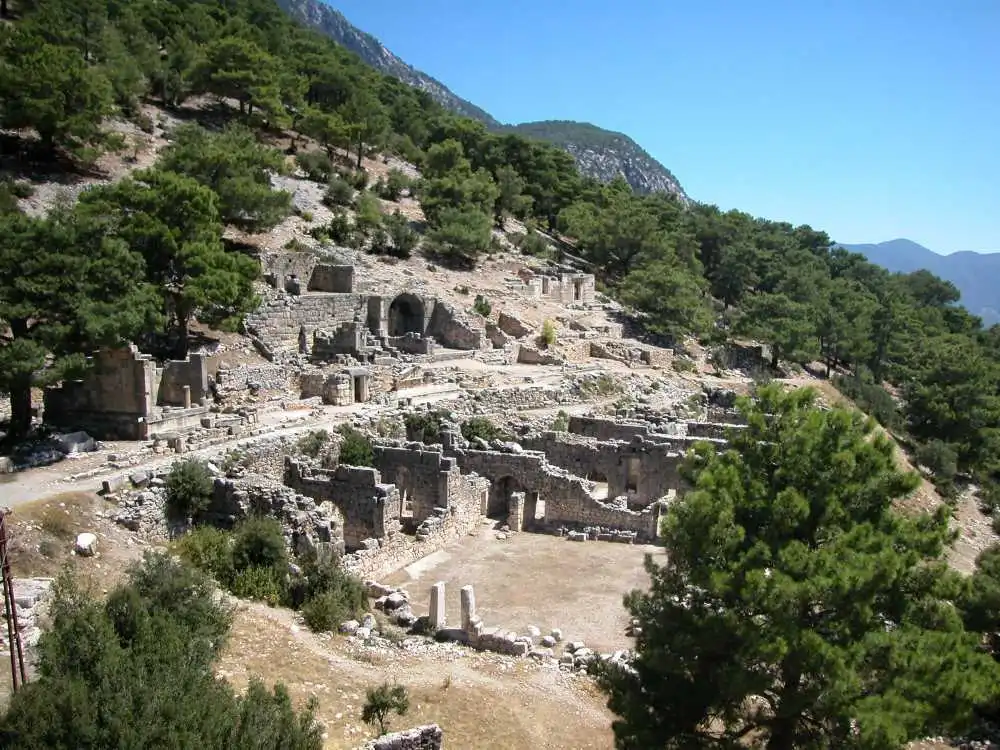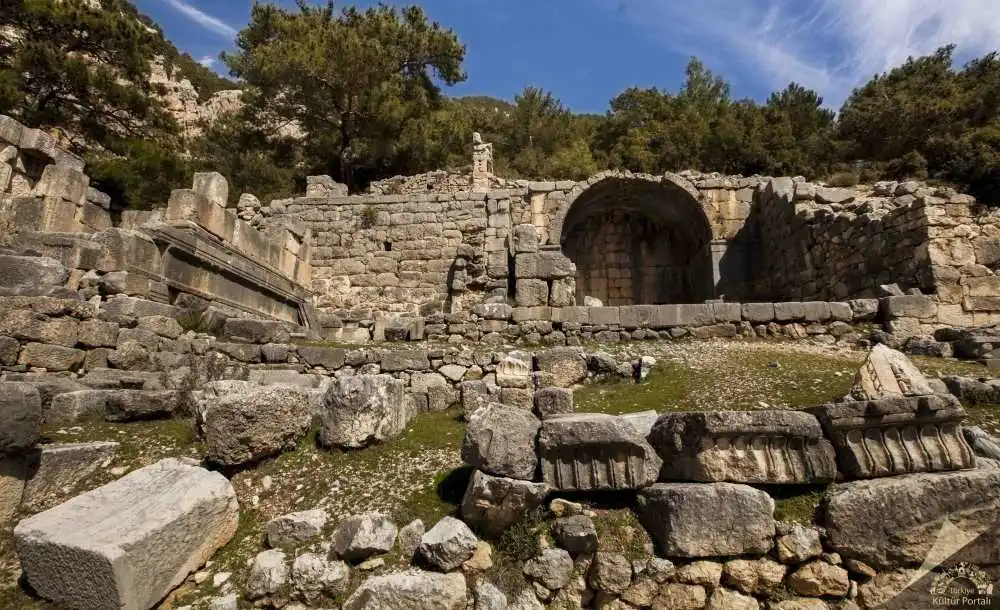Arykanda Ancient City
Description
The name of the ancient city of Arykanda, located within the boundaries of the village of Arif in the Finike district of Antalya province, means "Ary-ka-wanda", "the place by the high rock" in the Lycian language. The fact that the name of the city reflects the native Anatolian language philologically shows that it is one of the oldest cities in the region. In addition to Arykanda, Late Chalcolithic/Early Bronze Age axes found in Limyra and Patara in recent years indicate that the region was intensively settled. However, it is difficult to date the city before the 5th century BC on the basis of the finds, except for the stone axe dated to the 2nd millennium BC. Coins of the local lords Kuprili and Aquwami from the 5th century BC reflect Arykanda during the Persian domination, followed by coins of Pericles, Lord of Limyra, from the 4th century BC. According to this, Arykanda must have remained under the rule of Limyra for a while and changed hands with Alexander. It is known that after the death of Alexander, like the other cities of the region, it fell into the hands of the Ptolemies, then the Seleucids, and after the Peace of Apemea (Dinar) it came under the control of Rhodes.
In the 2nd century BC, Arykanda was minting coins as a city in the Lycian Union. In 43 AD, when Emperor Klaudius put an end to the Lycian Union, the Lycian Region was turned into a province together with Pamphylia and connected to Rome. In the 2nd century AD, the name Arykanda was mentioned by various sources. The city, which was partially restored after the great earthquake in 240 AD, was called "Akalanda" or "Orykanda" during the Byzantine rule. It is possible that Arykanda, which we know to have existed until the 11th century based on the ruins and Byzantine sources, was relocated after this date and moved to the south of today's motorway.
The town of Arykanda is situated on land that slopes southwards from the base of a steep cliff known as Shahinkaya. The highest building in the town is the watchtower on the south-west slope of Sahinkaya. The triangular acropolis to the south of the tower is thought to be the first settlement in the city. To the east of this area is the Bouleuterion and to the north of the three shops to the east is the temple built in the 4th century BC in the name of the sun god Helios. After the watchtower, the next highest structure in the city is the stadium, built in the 1st century BC. There are rows of seats on one long side and the other long side opens onto the hillside. On the lower terrace is the small but best preserved theatre in the region. On the lowest terrace are the Agora and the Odeon, which also served as a council building. The gymnasium in the south-east of the city is next to the baths, giving it the appearance of a bath gymnasium. The burial ground, known as the eastern necropolis of the city, is notable for its monumental tombs, many of which have been preserved. All the monumental tombs, which serve as terraces for each other, date from the 2nd century A.D. The bath, which survives to the level of the roof on the terrace below, is one of the best-preserved structures in the city. The city's water supply is provided by systems that show great skill and hydraulic engineering. Four canals at different levels, carved into the steep rock faces where the Aykırıça springs are, form the main lines of the system that brings water to the city.
Short Description
The name of the ancient city of Arykanda, located within the boundaries of the village of Arif in the Finike district of Antalya province, means "Ary-ka-wanda", "the place by the high rock" in the Lycian language. The fact that the name of the city reflects the native Anatolian language philologically shows that it is one of the oldest cities in the region. In addition to Arykanda, Late Chalcolithic/Early Bronze Age axes found in Limyra and Patara in recent years indicate that the region was intensively settled. However, it is difficult to date the city before the 5th century BC on the basis of the finds, except for the stone axe dated to the 2nd millennium BC. Coins of the local lords Kuprili and Aquwami from the 5th century BC reflect Arykanda during the Persian domination, followed by coins of Pericles, Lord of Limyra, from the 4th century BC. According to this, Arykanda must have remained under the rule of Limyra for a while and changed hands with Alexander. It is known that after the death of Alexander, like the other cities of the region, it fell into the hands of the Ptolemies, then the Seleucids, and after the Peace of Apemea (Dinar) it came under the control of Rhodes.






